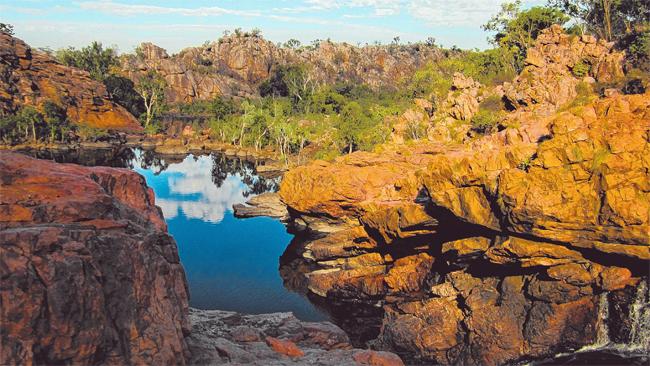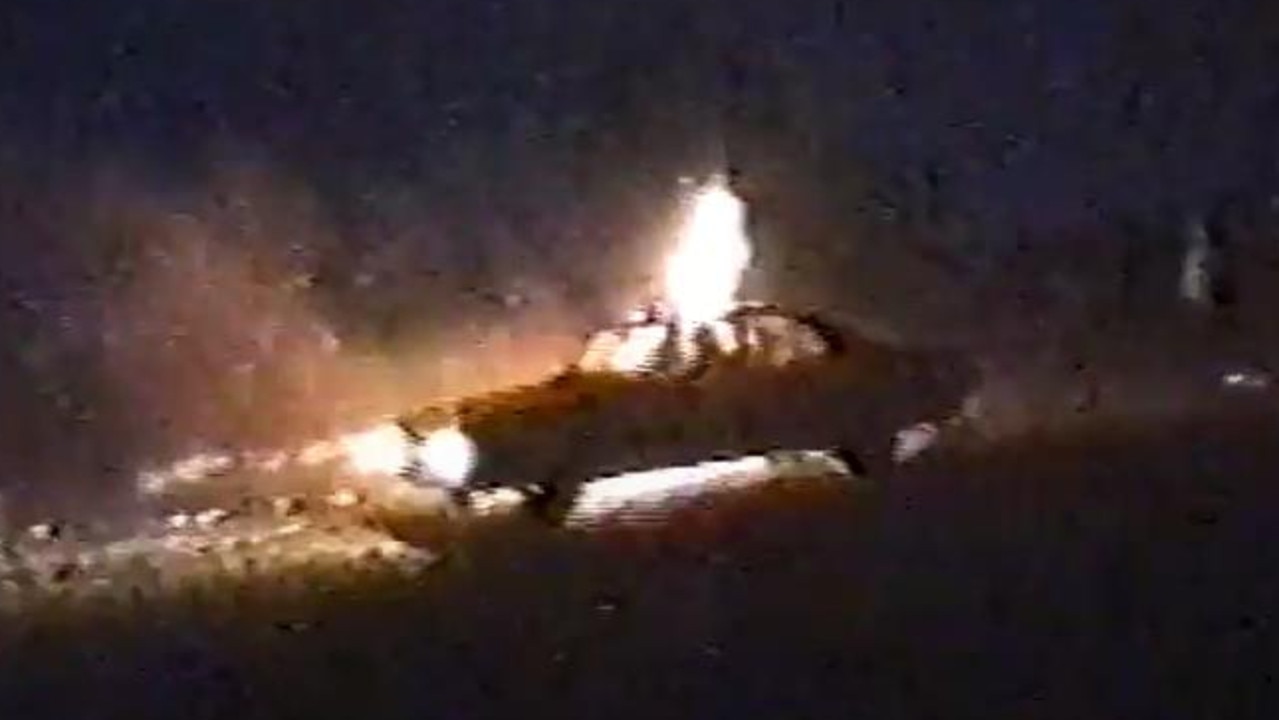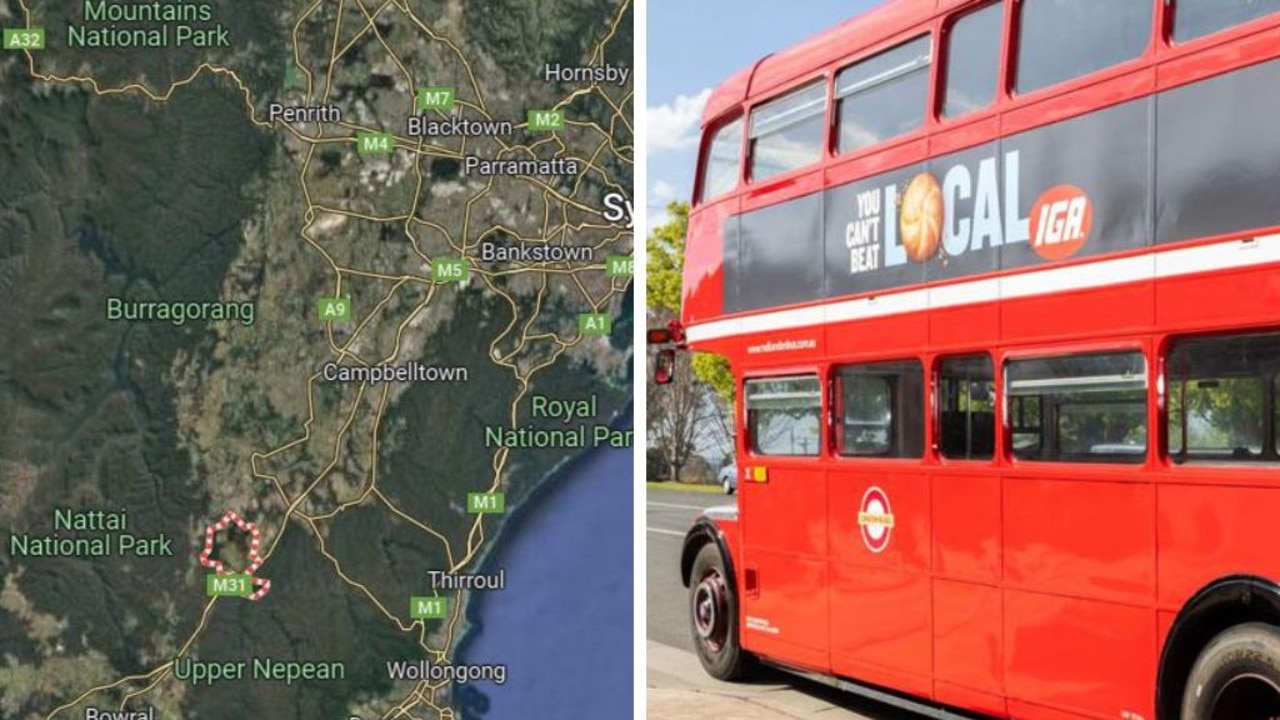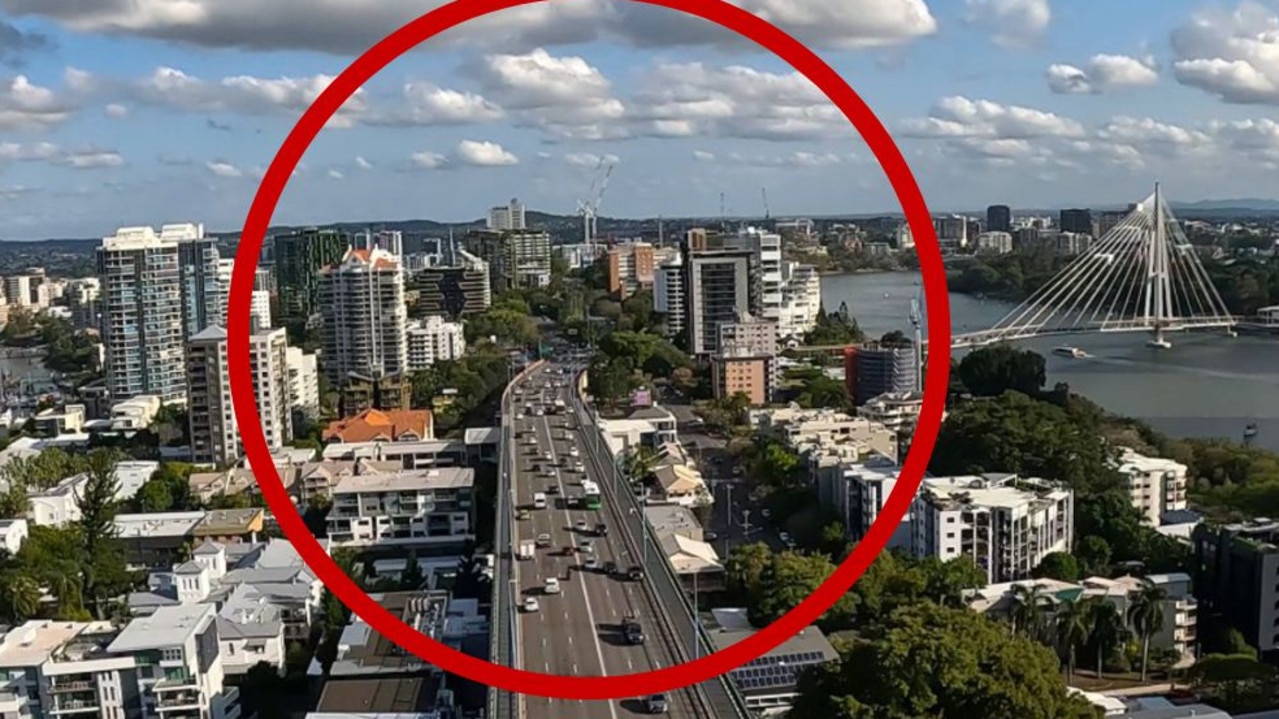Camp out in Kakadu
IT'S almost impossible to see everything Kakadu has to offer, but you'll certainly get close on this trek through gorges, billabongs and more.

I'M STANDING on the edge of a cliff looking at a sight for sore eyes, let alone the rest of my tired body. My feet hurt, my thighs are wobbly and my nerves have seen better days, but every ache and pain has been worth it.
It's day four on a five-day tour with World Expeditions through Kakadu and it has all been leading to this.
Our six-strong group of women is being led by Steve the tour guide - our very own Mick Dundee if you will, nicknamed the Rockhopper for reasons that become all too apparent as we begin our eight-hour hike through one of the more restricted parts of Kakadu Koolpin Gorge.
It couldn't have been more different from four days ago when our group was inside the foyer of Darwin's flashy Vibe hotel waiting for Steve to arrive and for our trip to begin. Into the fancy hotel driveway came a mud-splattered Troopy with a large trailer, roof racks packed with swags and attitude to boot.
The World Heritage-listed national park in the Top End is 254km east of Darwin and about a three-hour drive on the Arnhem Highway. Full of natural and cultural wonders, Kakadu has one of the highest concentrations of Aboriginal rock art sites in the world (there are more than 5000 in the area) and covers more than 19,000sq km. It is also home to rugged escarpments, lush wetlands and rich and varied wildlife.
Setting up camp
We made a leisurely drive into camp at Mardugal on day one, making stops along the way at peaceful Fogg Dam and Old Jim Jim Rd for lunch. As we set up tables and tore through lettuce, a group of young Spanish guys drove past slowly in a 2WD, eyes fixed on the water. They reversed back to us, wound the window down and asked hopefully, "Have you seen a crocodile here?". The reptiles are a major attraction for tourists, with dozens of river cruises and parks promising everything from jumping crocs to leisurely swims (divided by glass) with the swamp monsters.
After setting up camp and being given our individually named swags (I scored the Firetail Skink) we headed to Kakadu Culture Camp at dusk. About 20 of us took a seat outside on large logs where local Aboriginal guides showed us some of their traditions, including basket weaving. The Aboriginal people of Kakadu are known as Bininj/Mungguy while the name Kakadu comes from a language called Gagudju one of the languages spoken in the north of the park at the beginning of the 20th century.
The sky soon turned black so we made our way down to the billabong for a night cruise. With no ambient city light the stars shone brilliantly as we spookily floated along eyeing crocodiles, birds and fish by spotlight. It's incredible to think that by Christmas each year the site of Kakadu Culture Camp is completely under water as the wet season takes over. Such is the extraordinary nature of this unique place.
We woke up the following morning to the sound of Steve preparing breakfast. One by one we sleepily sat up in our individual mozzie dome-style tents and emerged to begin the new day. We were off to the Nanguluwur rock art site dating back 20,000 years. It's a light hike to get there through tropical savannah woodlands and boasts a varied and vivid gallery.
After lunch, we headed to the famous Yellow Water Billabong for a sunset cruise. Serene and peaceful, it is home to crocodiles, wild brumbies and birds including jacana, egrets, jabiru, sea eagles and magpie geese. We saw plenty of everything in this beautiful wildlife reserve and left the boat feeling refreshed and revitalised.
On day three we packed up camp and headed to gorgeous Barramundie Gorge. A 1km walk through monsoon rainforest led to the base of a large waterhole, but we hiked farther up to a series of small pools surrounded by rock cliffs and took in the view before taking a quick dip. In the afternoon we headed to camp at Koolpin Gorge, driving unsealed roads and crossing rocky watercourses to gain access to this restricted site. We took turns in the front seat taking in the views and playing DJ with the various iPods being passed around.
As we drove into camp we spotted a herd of wild buffalo, a rare sight. When we arrived at camp, surrounded by eucalypt forest, we were treated to a prize sunset behind the distant hills.
The following morning we woke up early in preparation for our full-day hike. Our daypacks stuffed with water bottles, swimmers and food, we started our trek and within five minutes had reached a creek beautiful enough to have been the final destination.
We carefully made our way through rock pools, being careful not to slip or lose balance. Next came bouldering, then rock scrambling, then climbing up a steep cliff edge. We passed plunging gorges, cascading waterfalls and tranquil waterholes the whole way, and at the summit we took in the glorious view of the red desert land before us. It was the highlight of the trip, but there is so much to see and do in Kakadu.
You won't only feel it in your tired bones, but in the corners of your soul. More: www.worldexpeditions.com.au
More: www.worldexpeditions.com.au Top Tips: Northern Territory Destination Guide
Top Tips: Northern Territory Destination Guide  Flight deals: Book your trip with Wego
Flight deals: Book your trip with Wego



